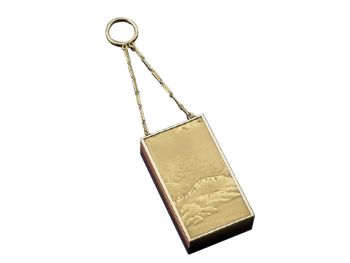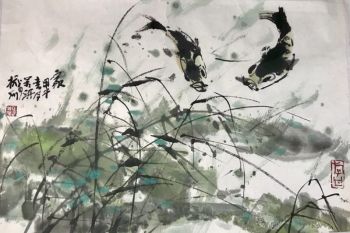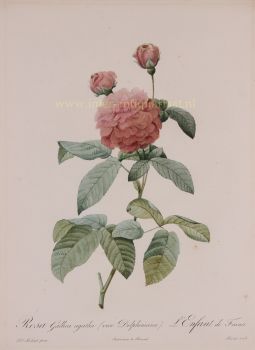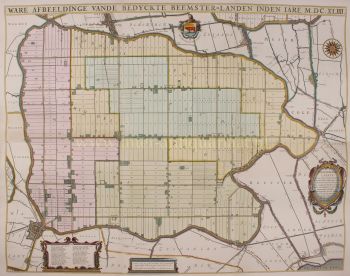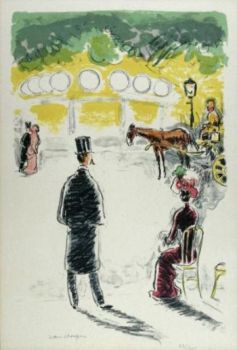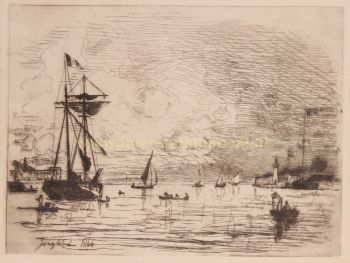LIVRO ENGELBERT KAEMPFER 1651 - 1716
Engelbert Kaempfer
Papel
ConditionRestored
Preço em pedido
Zebregs & Röell - Fine Art - Antiques
- Sobre arteDe Beschryving van Japan, behelsende een verhaal van den oude en tegenwoordigen Staat en Regering van dat Rijk, ...... benevens eene Beschrijving van het Koningryk Siam ........Uyt het Engelsch in ‘t Nederlands vertaalt. Published in 1729 by P. Gosse and J. Neaulme, ‘s Gravenhage, and Balthasar Lakeman, Amsterdam.
First Dutch edition with numerous copper plates showing the geography, architecture, flora, fauna, the Dutch court journey, Japanese script, Gods, etc.
In a modern slip-case. Original marbled cover, spine replaced. With some restorations.
Note:
Engelbert Kaempfer, born in Germany, was a physician, medical doctor, naturalist and world traveller. In 1683 he departed on a trip via Moscow to the court of the Shah of Persia in the company of a Swedish delegation. There he joined the VOC as ship’s doctor, and by way of India went to Batavia, the VOC headquarters in Asia. In Batavia he studied all available sources of Japan he could lay hands-on, and in 1690 got his chance to go to Japan where he stayed till November 1692 in the Dutch trade-post on the small island of Deshima in the harbour of Nagasaki. During his stay in Japan, he twice accompanied the “Opperhoofd”, head of the trading post, on his court journey to the Shogun in Edo (Tokyo). On these trips, he observed and made notes on the history, society, politics and religion, as well as flora and fauna of Japan, and he also made many sketches for the illustrations in his books. Thanks to his training in many topics such as mathematics, astronomy, natural science and medicine, Kaempfer was the first Western person with a scientific approach to countries in Asia, which were so different from Europe. Gifted with excellent observational capacities, he recorded everything he saw in great detail in writing and drawing. His descriptions of the audiences with the Shogun also clearly show the enormous hunger of the Japanese for information about Holland and the Western world. The Shogunate at that time was bent on not allowing any geographical information on Japan to go out of the country. By adding descriptions in Arabic to his drawings, Kaempfer got away with it.
After his return to Holland in 1693 Kaempfer first wrote his thesis and received his doctorate from the University of Leiden in 1694. After that, he returned to his native Germany where he was employed as a medical doctor and devoted much of his time to writing his book “Das Heutige Japan”. He was unable to find a publisher, and after his death in 1716, all the material he had collected and his manuscript went to his nephew who due to financial problems sold everything and subsequently it was acquired by the collector and physician Sir Hans Sloane, who asked his young Swiss librarian Johan Caspar Scheuchzer to translate the German manuscript into English. Scheuchzer, not being a native English speaker and not being very sympathetic towards Kaempfer’s positive attitude towards Japanese social and heretic religious systems, made various changes and eliminations to the original manuscript. The present Dutch translation was based on Scheuchzer’s English edition.
Nevertheless, upon its first publication in 1727 “The History of Japan” was an immediate success and with its 12 editions in a short time and the translation into French and Dutch, must be considered an absolute best-seller.
- Sobre artista
Engelbert Kaempfer (16 de setembro de 1651 - 2 de novembro de 1716) foi um naturalista, médico, explorador e escritor alemão conhecido por sua viagem à Rússia, Pérsia, Índia, Sudeste Asiático e Japão entre 1683 e 1693.
Ele escreveu dois livros sobre suas viagens. Amoenitatum exoticarum, publicado em 1712, é importante por suas observações médicas e pela primeira descrição extensa de plantas japonesas (Flora Japonica). Sua História do Japão, publicada postumamente em 1727, foi a principal fonte de conhecimento ocidental sobre o país ao longo do século XVIII e meados do século XIX, quando foi fechado para estrangeiros.
Você está interessado em comprar esta obra de arte?
Artwork details
Related artworks
Tilmanus Nicolaus Maastricht
Missale Romanum com montagens de prata holandesa1788 - 1792
Preço em pedidoJacob J. Roosjen SRI
Yoko Ono
YOKO ONO: "ARISING" SIGNED BOOK PLUS SMALL ARTWORK 2010 - 2014
Preço em pedidoGallerease Selected
Tilmanus Nicolaus Maastricht
Missale Romanum com montagens de prata holandesa1788 - 1792
Preço em pedidoJacob J. Roosjen SRI
1 - 4 / 21- 1 - 4 / 24
- 1 - 4 / 24
 Com curadoria de
Com curadoria deDanny Bree
Artista Desconhecido
UM MODELO JAPONÊS DE UM NORIMONO, UM PALANQUIM1650 - 1700
Preço em pedidoZebregs & Röell - Fine Art - Antiques
1 - 4 / 12
































